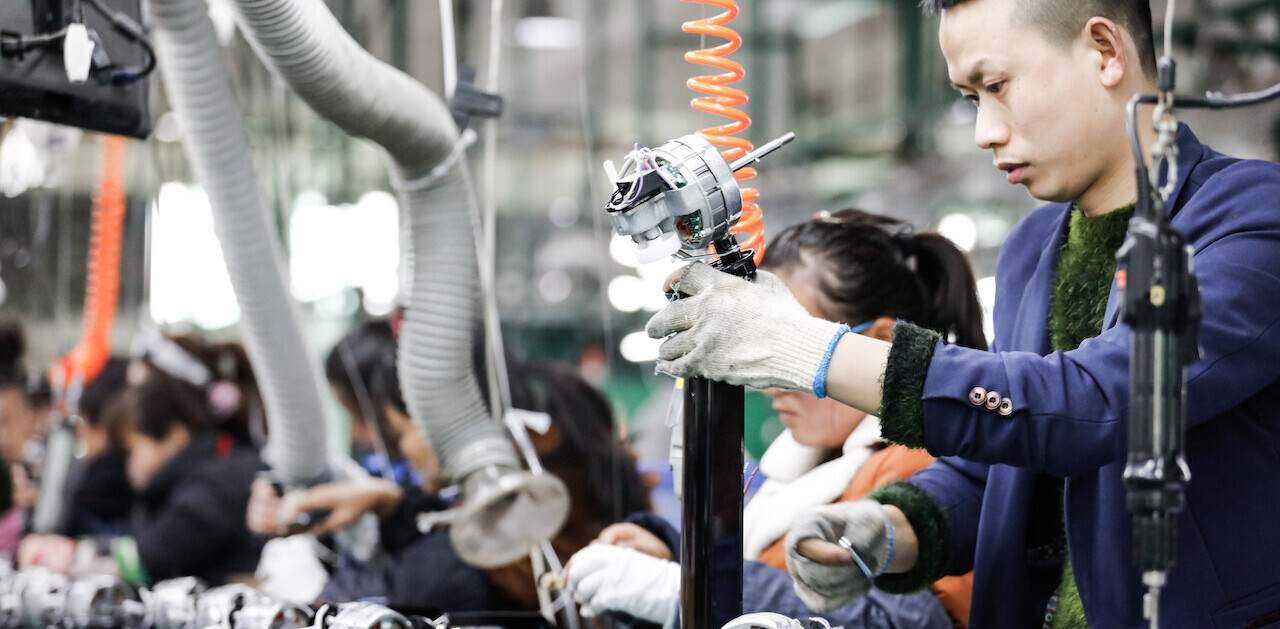
This post originally appeared on the 15five blog and has been republished with permission.
Running a company can often feel like caring for a newborn child. There is a natural and healthy fear that arises that if you are not eternally vigilant then something bad will happen.
With a baby, this is called good parenting. With a company, this is called micromanagement and it is universally resented by all employees.
Your company may feel like your baby, but the professionals that you hire to implement your vision are competent, skilled adults who do not desire to be treated that way. There is a certain amount of management necessary to advance people in their careers and keep them aligned with company goals. But executives and managers must learn to let go and trust, or risk stifling and alienating their talent.
Put away the microscope
In physics, the observer effect states that observing a phenomenon has an impact on what is being observed. For example, when using an electron microscope to view subatomic particles, the light from the microscope impacts the movement of those particles. Since scientific methods require objectivity, the influence of observation can call the entire experiment into question.
Micromanagement works in much the same way. When employees are aware that they are being observed by managers, that impacts their behavior — usually negatively.
That means that managers don’t even get an accurate, clear picture of employee performance. Their presence and constant unsolicited input is changing how the employee would perform without that added pressure. If employees do not perform up to standards (which may or may not be fully communicated or explicitly expressed), the manager feels justified in his obsessive behavior and a vicious cycle begins to form.
Under pressure
Peggy Drexler contributed an article to Forbes last year, detailing causes and solutions to the “helicopter boss” syndrome. She discusses how the constant hovering of certain bosses is the most significant barrier to employee productivity. Nobody wants to work when their every move is scrutinized.
For Dr. Drexler, there is a thin line between being detail-oriented and obsessive. Some managers keep a watchful eye because an employee has let them down in the past or as they are ramping up a new hire. Others hover over every employee due to their own control issues — fear of failure or job insecurity.
Light pressure is a good thing –if your employee can’t perform well with you standing there, how will they perform in an adversarial setting like negotiating a sale?
But the undue pressure of constant involvement by management causes people to choke when they might otherwise excel. Talented team-members begin to lose faith in their own abilities under your constant gaze.
Motivation comes from within
Micromanagement is not just annoying, it deprives employees of the most critical components of satisfaction. According to Daniel Pink, author of bestseller Drive, while providing your employees with autonomy can feel scary, it is one of the key drivers of performance.
Pink found that for today’s knowledge workers who perform tasks requiring even rudimentary cognitive skill, there are three intrinsic motivating factors that affect performance: autonomy, mastery, and purpose.
Autonomy is the desire to be self-directed and no amount of money, benefits, or perks can provide that basic human need. When managers are involved in the thought process behind every employee decision and direct every action, they rob employees of the personal satisfaction that is attained by conquering a challenge through individual effort.
Mastery is only attained when people are allowed to work on a task autonomously for long enough (with periodic input and support from leaders). The accompanying satisfaction is incredibly powerful, like autonomy on steroids.
That is why, according to Pink, employees will work so hard during their discretionary time. Both Wikipedia and the Linux operating system exist because people wanted to perform challenging, technically sophisticated work for no greater reward than personal fulfillment.
The final piece of the motivation puzzle is that people are highly driven to work towards a purpose. I believe that this desire to be part of something that is greater than oneself is the path to true happiness.
Instead of stifling this innate human need, company leaders can channel it. Gently guide your best and brightest towards the fulfillment of your company mission – to provide great products, change the world, or help individuals and organizations reach their highest potential.
By micromanaging, people are only driven to perform in the hope that you will one day leave them alone.
Healthy visibility
The observer effect on a physical process can often be reduced to insignificance by using better instruments or observation techniques.
I have found that the best observation technique is asking my team questions. Knowing what drives the team and knowing their pulse (what they need, how they feel) allows for the cessation of micromanagement and the establishment of space for employees to flourish creatively.
Visibility into the team gives managers the confidence to let employees do their jobs. You can quickly identify performance issues, triumphs, and the way that each individual team member feels. Ask them what they would suggest and why in any given circumstance.
I allow every team member the opportunity to freely tell me where they are challenged, since articulating problems begins the process of solving them. Employees grow more and more confident in their skills and abilities, understand their roles better, and eventually unlock their potential.
Asking questions and receiving candid responses also creates a culture of communication and transparency. When everyone on the team is communicating, they can hold themselves and others accountable. You essentially have a whole team of managers without the confining aspects that damage employee morale or that interfere with their autonomy.
Let go of the wheel
Giving your talent the space to do their best work doesn’t mean that you let go of the wheel completely. You have to check in with them regularly, align them with the greater purpose, and either let them know that they are doing a good job or support them in the areas where they feel stuck.
By having a dialogue with your employees instead of telling them what to do, you are telling them that you trust them to do the right thing. You are present enough to offer support when needed and there to coach and guide instead of dictate and direct. More often than not, this presence is enough to steer them towards the right decision.
Your employees will make mistakes, and some of them will be costly. But by letting go, you empower them to learn from their mistakes, make better decisions, and ultimately grow into leadership positions where they can manage others with the same light touch.
How has micromanagement impacted you or your company? We revel in funny stories, so feel free to share!
Get the TNW newsletter
Get the most important tech news in your inbox each week.




